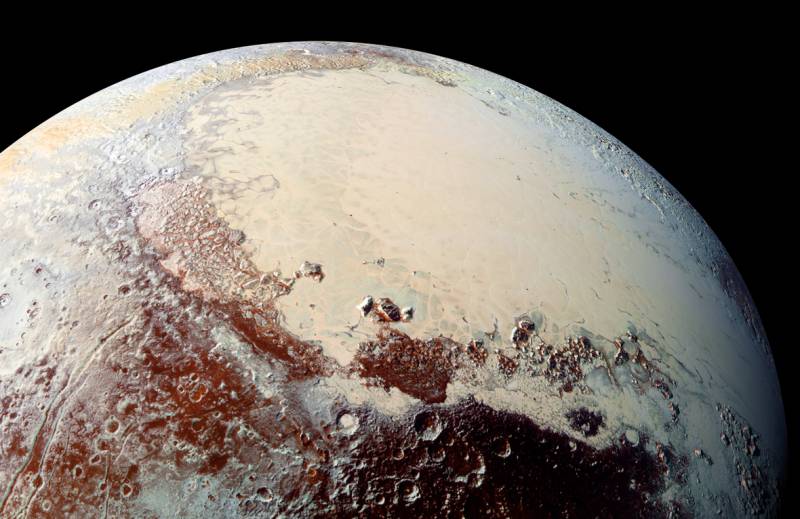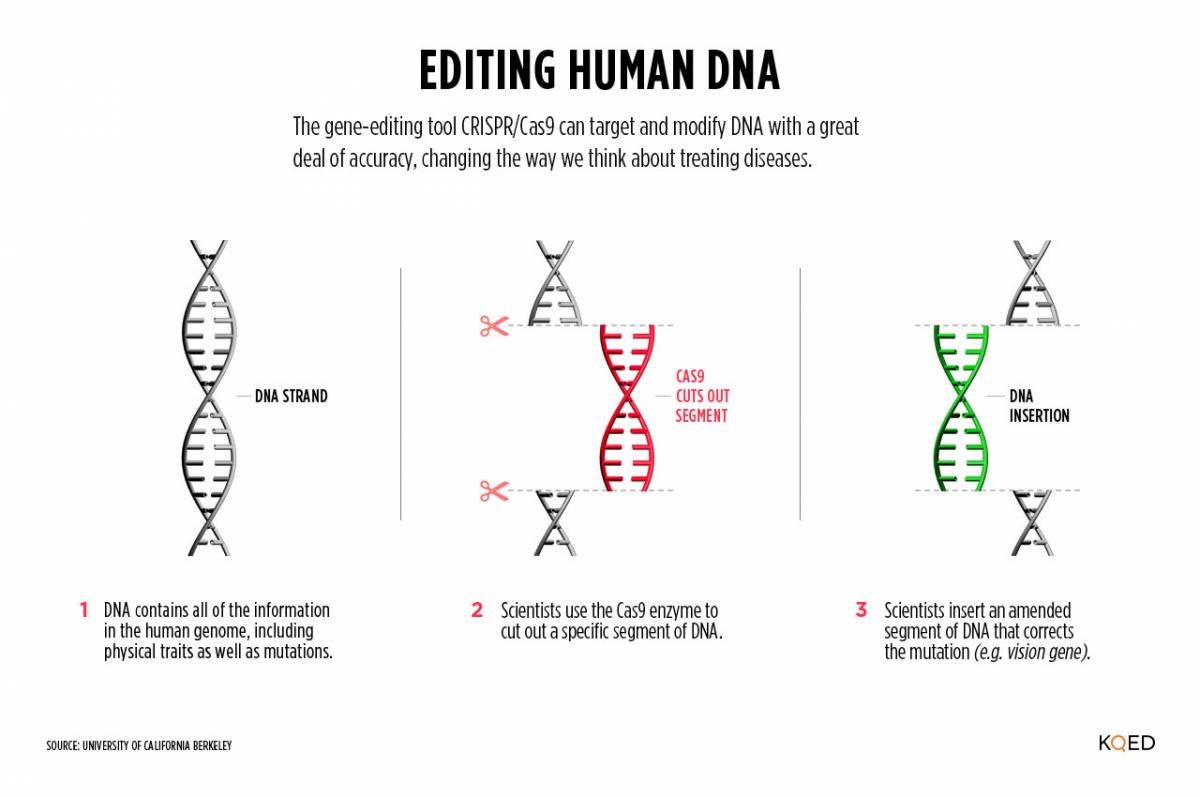The 2010s saw breakthroughs in medical science and spectacular discoveries in space and physics. For Californians, it was also the decade that climate change arrived in our front yards in the form of serial cataclysmic fire seasons.
During the decade, scientists refined the regimen of HIV/AIDS medication, made life-saving advances in the treatment of cancer, and invented an entirely new gene-editing technology, with the hope of one day curing diseases before they begin.
NASA’s New Horizons probe captured the first close-up images of Pluto, and the world caught its first glimpse, albeit a bit blurry, of a black hole. Our understanding of exoplanets exploded: the Kepler Space Telescope and the TESS satellite found thousands of new planets outside our solar system, and researchers began to comprehend what those worlds might actually look like.
As the decade closes, the KQED Science team has created a sort of mixtape of the major trends, significant moments and noteworthy discoveries, with an eye toward California and the Bay Area.
Do you want the good news or the bad news first? Well, let’s get it out of the way …
Wildfires Create Havoc
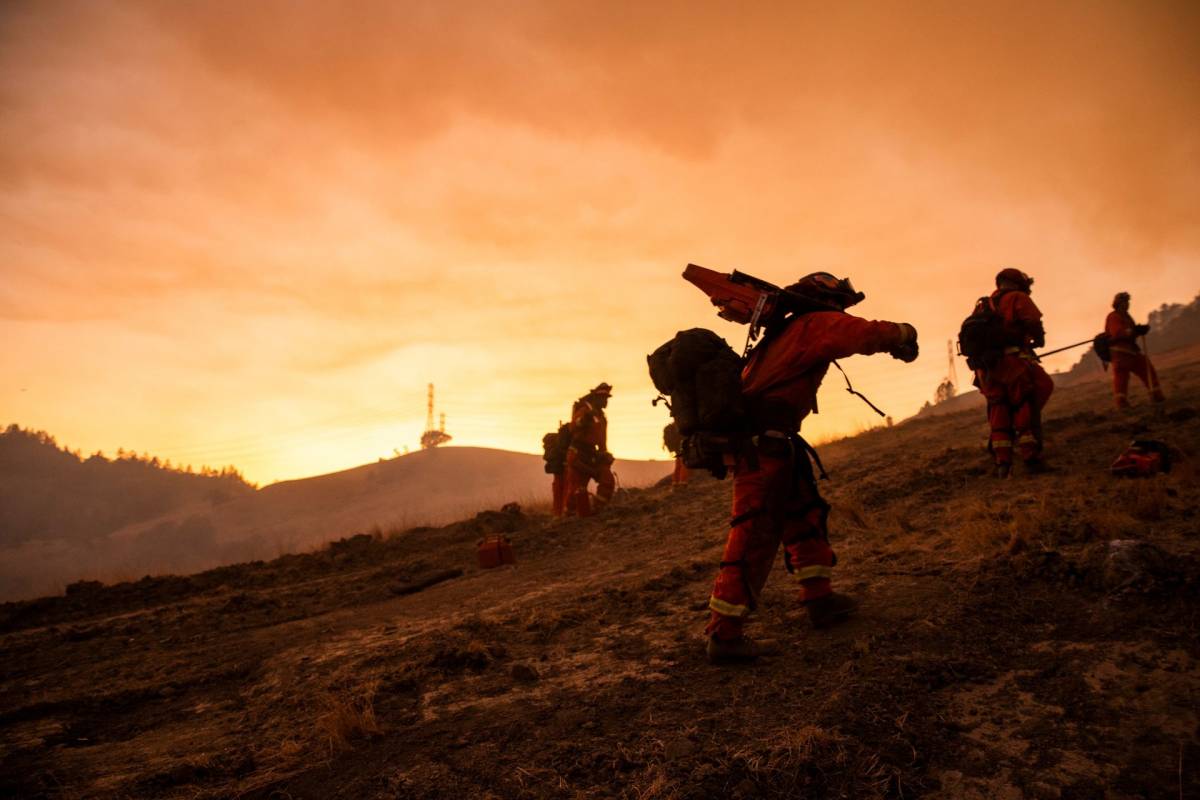
The changing climate is leading to longer dry periods in California, which is at least three degrees warmer since the beginning of the industrial era, the Environmental Protection Agency reported in 2016.
Climate change, combined with a century of suppressing wildfires and denser populations in areas perilously close to fire-prone wilderness, have created the worst fire seasons on record. Since 2012, four of the five biggest California wildfires have burned over 1.2 million acres.
Late on Oct. 8, 2017, hot, dry winds downed power lines, carrying sparks and flaming embers long distances to ignite multiple fires. The Tubbs Fire and other North Bay blazes scorched large areas of Sonoma and Napa counties, claiming 44 lives and destroying over 8,000 buildings.
The following summer, during the Carr Fire, a “fire tornado” exploded into the outskirts of Redding, devastating everything in its path. The blaze killed eight people and destroyed 1,000 homes.
But the worst was yet to come. In November, the Camp Fire nearly wiped out the town of Paradise and surrounding communities. It was the deadliest wildfire in California history, killing 86 people, destroying almost 14,000 homes, and costing more money than any natural disaster in the world that year. Across wide swaths of the state, smoke from the fire rendered the air unhealthy to breathe, inundating the Bay Area for almost two weeks so that the region registered its worst air quality on record.
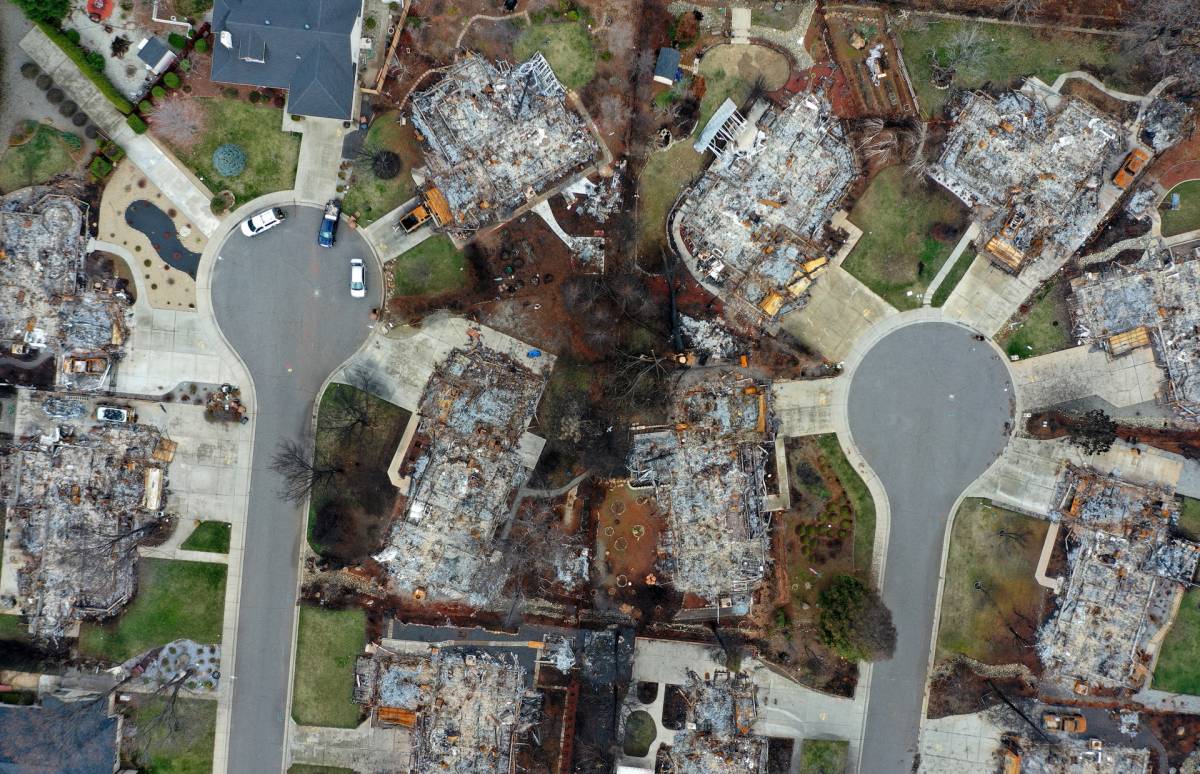
As far as global warming goes, the outlook is not good, whether it relates to fires or to other natural disasters. The 2010s included the hottest year (2017) and the hottest month (July 2019) on record, and the 10 years that make up the decade will almost certainly set a new temperature mark as well, according to the U.N., based on millions of global measurements taken over the last 170 years.
This summer, our series Living With Wildfire: California Reimagined asked some big questions about how the state can, in our warming world, learn to survive more frequent and ferocious conflagrations. Are some fire-prone areas now too dangerous to accommodate new housing? How can towns prepare for mass evacuations? And neighborhoods make themselves fire-resistant? Are Californians willing to suffer the inconvenience and financial cost to protect the state from extreme wildfires? Perhaps, but it will mean big changes in how we think and live. — Danielle Venton
Rise of Renewables
As Californians began to experience climate change in the form of hotter days and more destructive fires, state policies to mitigate global warming began to pay dividends. California’s investor-owned utilities shattered renewable energy targets mandated by the state, and California reduced its overall emissions of greenhouse gases below the 1990 level, two years ahead of schedule.
These climate policies, in a state with the world’s fifth largest economy, helped spur a rapid decline in the cost of renewable energy around the U.S. This past decade, the cost of wind energy fell by 57%, utility-scale solar power by 86%, and battery energy storage by 76%. In 2019, for the first time, power generation in the U.S. from renewable energy surpassed power produced from coal. 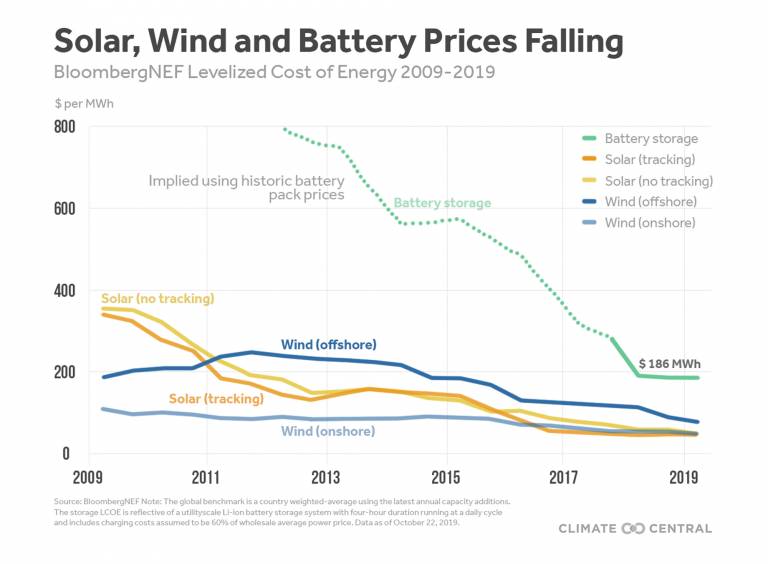
Those are big successes, but California has a lot of work to do over the next 10 years if the state is going to meet its 2045 goal of net-zero emissions, also called carbon neutrality. California is way behind in meeting this ambitious objective, in part because emissions from the transportation sector are soaring, due to Californians driving more miles in larger, gas-guzzling trucks and of SUVs.
The state is trying to reverse this trend by incentivizing fuel-efficient cars and setting a target of 5 million electric vehicles traversing California roads by 2030. But meeting that goal is going to be tough, with sales of EVs currently standing at only a fraction of that total.
Meanwhile, frustrated by the lack of progress in the fight against climate change, young people took to the streets the last couple of years. The Sunrise Movement, Youth vs. Apocalypse and other Bay Area advocacy groups participated in global climate strikes protesting the failure of government, finance, industry and other institutions to address climate change.– Kevin Stark
Medical Advances
The decade saw major advances in the treatment of HIV and cancer.
Over the last 10 years, scientists have perfected antiretroviral drugs, taken daily in a single pill by people who are HIV-positive. These drugs allow HIV patients to live relatively free of sickness, a far cry from the first decade of the epidemic, when the diagnosis was tantamount to a death sentence. No longer highly toxic, antiretrovirals now work so well they can lower a patient’s viral load to undetectable levels, making it untransmittable from one person to another. Another daily pill, called PrEP, can be used as a prophylactic against HIV exposure by people who are still free of the virus. Such major strides in treatment and prevention are why scientists are optimistic HIV will be eradicated altogether within the next decade.
For some types of cancer, a treatment called immunotherapy drastically improved survival and cure rates. For example, stage 4 melanoma , which doesn’t respond to radiation or chemotherapy, used to mean certain death, with patients surviving less than a year on average. But over the last decade, instead of burning or poisoning cancer cells to stop the disease, new medicines have unleashed the body’s natural defenses.
Normally the immune system recognizes disease-causing organisms. But cancer cells go undetected as harmful. New drugs, as well as genetic engineering techniques, make them visible and ripe for attack. Think of it like affixing a flag with the message “kill me” on cells that previously operated with impunity. Pancreatic, breast and prostate cancer, among other types, do not currently respond to immunotherapy, but scientists foresee a day when the treatment could be the primary weapon against an array of cancers.
There may also be a day when doctors can eliminate genetic diseases altogether. A tool called CRISPR acts as a molecular scalpel that can make precise changes to genetic mutations giving rise to disease. Scientists hope to one day cure genetic conditions like blindness or sickle cell anemia before they even start. Though tinkering with our DNA raises all kinds of ethical questions about “playing God.”– Lesley McClurg
